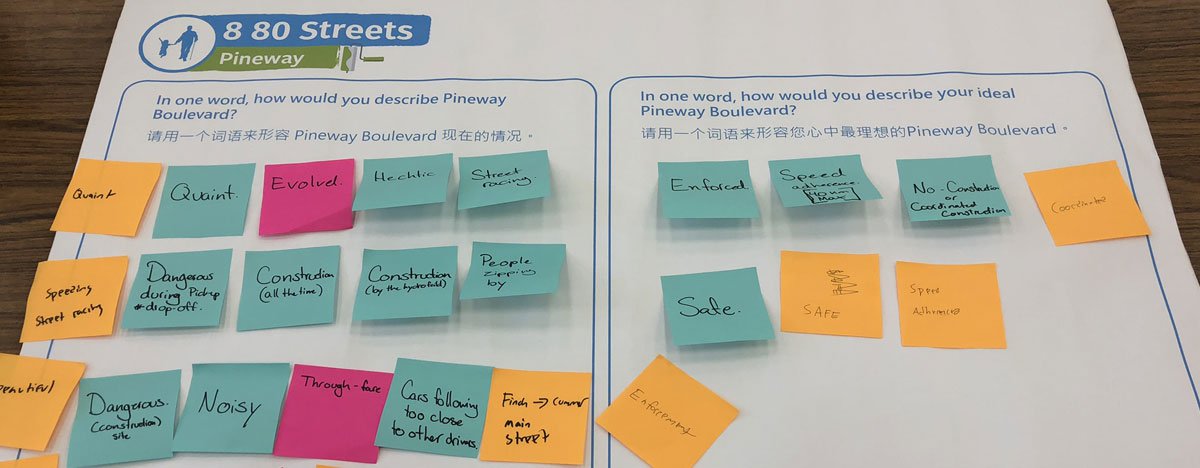
16 Sep 8 80 Streets Pineway: Traffic Calming Pop-up Street Intervention
The journey of 8 80 Streets starts when the funder/donor of the project, frustrated with the lack of action on pedestrian fatalities in the city, decided to reach out to 8 80 Cities and identify a strategy for addressing this issue. That year, 46 people walking or cycling were killed on Toronto’s streets. That is how this initiative was born, with a very stark and real reminder that our streets are not safe.
The entire project consists of three pop-up street makeovers, the first of which was installed last month on a section of Toronto’s iconic Danforth ave. We felt it was important, however, to address the fact that road violence is not only an issue of downtown Toronto neighbourhoods like the Danforth. In fact, most fatal pedestrian collisions in the GTA occur in suburban communities, which is why we are bringing the project to Pineway Boulevard, a residential street in North York.
We know that road design is the single most effective method for making the streets safer. Our roads are currently built to take any measure possible to shave minutes or even seconds off of a journey taken by car, often at the expense of pedestrian’s safety. What we are proposing is interventions that leave cars no other option but to acknowledge people walking, and cycling. In the case of Pineway in particular, we are installing traffic calming measures like bump-outs that impede cars from illegally speeding through.
Slowing down cars is extremely efficient when it comes to making our streets safer. Not only are drivers able to notice other road users, but cars travelling at a lower speed also need less time/space to come to a complete stop. Furthermore, the chances of a cyclist or pedestrian surviving a collision is directly linked to the speed at which the vehicle is travelling. According to the World Health Organization, “pedestrians have been shown to have a 90% chance of survival when struck by a car travelling at 30 km/h or below, but less than 50% chance of surviving an impact at 45 km/h”. The solution is clear, the human body is not designed to withstand high impact, let’s design our streets so that high impact is not a possibility.
But it isn’t just a matter of people’s lives, it is also a matter of a city’s collectively livelihood. The prioritizing of cars in our streets is depriving our neighbourhoods of street life. Kids playing on the sidewalk, teens biking, people stopping to chat with their neighbours. When we aren’t preoccupied with fighting for space with cars, we have more time to make our streets more livable. We need to start designing our streets with people in mind.
“We need to design our cities like places to be lived, not problems to be solved”
– Colin Ellard, Places of the Heart



